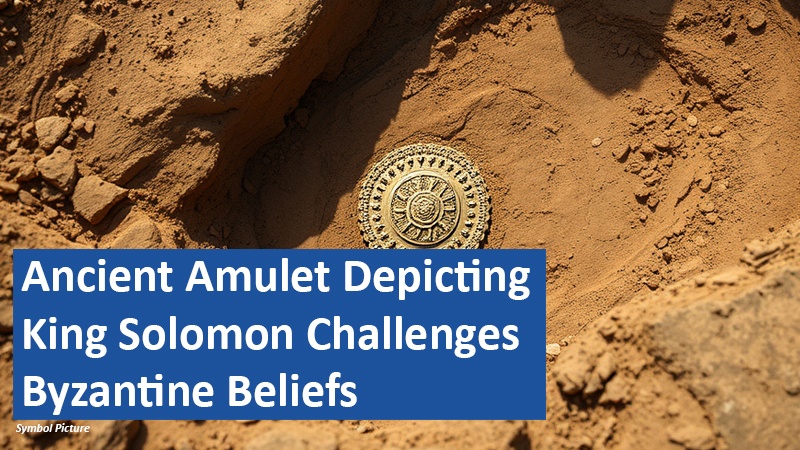
Archaeologists in Turkey have made a surprising discovery that challenges our understanding of early Christian practices in the region. While searching for the remains of a Byzantine ascetic monk, they instead unearthed a 1,600-year-old bronze amulet depicting King Solomon, shedding new light on the spiritual beliefs and ritual practices of Byzantine society.
######################################################
Now exclusively try Amazon Prime and Prime Video free for 30 days!
##########################################################
The Search for an Ascetic
The archaeological team had hoped to find the grave of a renowned Byzantine monk known for his ascetic lifestyle and spiritual devotion. They were exploring a remote area of Turkey that was once a center of early Christianity. However, instead of the expected burial site, they stumbled upon something entirely unexpected.
An Extraordinary Artifact
During their excavations, the archaeologists discovered an intricately crafted bronze amulet, initially puzzling in its purpose and significance. The artifact, dating back to the 5th century AD, bears the image of King Solomon triumphantly defeating the devil with a spear while riding a horse. This representation is unique in the Anatolian region and challenges typical Byzantine artistic conventions.
New Insights into Byzantine Culture
Upon careful analysis, the archaeologists determined that the amulet was likely used for protective purposes. The artifact features inscriptions in ancient Greek on both sides, with one side proclaiming, “Our Lord has conquered evil”. This discovery suggests that Byzantine society may have been more influenced by Old Testament figures and possibly pre-Christian beliefs than previously thought.
A Mystery for Research
The find raises new questions about religious practices and cultural influences in the Byzantine Empire. Researchers hope that further studies will reveal more about the significance of the amulet and its role in Byzantine society. This discovery could help complete our understanding of Byzantine culture and provide new insights into the religious beliefs of the people.
The unexpected discovery of this extraordinary amulet depicting King Solomon, instead of the expected monk’s grave, has presented new challenges for archaeological research. As researchers continue to unravel the mysteries of this artifact, they may uncover more about the complex interplay between early Christian and pre-Christian traditions in the Byzantine Empire.
This finding expands our understanding of Byzantine culture and invites us to reconsider the broader historical context of religious practices and cultural influences in the region, potentially leading to a more nuanced view of the past.
What other secrets will future explorations of Byzantine culture reveal? And how will this knowledge change our understanding of history? Discuss in the comments.
Based on content from www.dailygalaxy.com and own research.